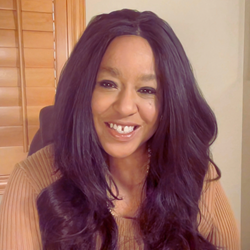Schools must identify and prepare for the crisis situations they are likely to face, from severe weather and fires to mental health crises and active assailants. Just as drills are conducted for what to do during an emergency, reviewing your communication strategy can help pinpoint gaps in communicating the right message to the right people in the midst of a incident response.
For school districts who’ve adopted Panic Button technology, school administrators, teachers and staff have a life-saving communication tool to alert 9-1-1 from their smartphone. The valuable two-way communication tool also triggers a 360-degree emergency communication strategy, ensuring that first responders, parents and guardians receive the information they need at the right time.
Critical Communication for School Emergencies
When a tragedy strikes, schools cannot afford to delay notifying 9-1-1 and others on-site. With five key stakeholders all needing information, not everyone requires the same information simultaneously.
- 9-1-1 Dispatchers need to know the type of incident to begin assessing the appropriate response.
- First Responders need a clear understanding of the campus layout, points of entry and potential danger they face on arrival.
- School administrators want to understand unaccounted for students, teachers and staff.
- Teachers and staff depend on shelter-in-place orders or instructions to lead children to the predetermined reunification site.
- Parents and guardians will want regular updates regarding the location of their children and the actions taken to resolve the incident.
It’s crucial to ensure that emergency communication protocols are optimized to keep all stakeholders informed of the details they need to know.
Targeted Messaging During An Emergency
When every second counts, targeted mass notification systems help get the right message to the right people at the right time. Sending too few (or too many) details to parents and guardians, for example, can lead to rumors, misinformation and panic, which can hamper response efforts.
It’s essential to give first responders and 9-1-1 as many critical details as possible, including building floor plans, egress routes, and when possible, live video of the scene. Teachers and on-site staff need different information, including evacuation or shelter-in-place orders, and when incident commanders give the order to lead students to the reunification area.
Recipients can be chosen based on geolocation, role, or another pre-defined category. Targeted emergency notifications help protect sensitive information and reduce unnecessary interruptions to learning, while ensuring key stakeholders stay informed.
Review to Improve Emergency Response Plans
A school emergency is rarely a simple, straightforward event, so every school year requires a review of emergency response plans and communication processes. After Action Reviews offer valuable insight into the efficiency and efficacy of critical communication.
Some areas to review after a drill or a real-live event include:
- Initial notification strengths: How well trained are school administrators, teachers and staff on what happens once alerted to an emergency situation?
- Situational awareness: Did 9-1-1 and law enforcement have the most recent facility layouts and floor plans to assist first responders on-site to aid in response?
- Community instructions: How well were parents and guardians kept abreast of developments during the incident or with reunification instructions?
- Post-event communications: How did we communicate the incident resolutions, our post-event findings, and recommendations for continuous improvement of our emergency communication strategy?
By reviewing drills and real-world incidents, administrators, school resource officers and staff members can identify areas for improvement and make adjustments before the start of every school year.
Improve Your School’s Emergency Communication
A comprehensive school emergency communication system requires more than just fire alarms and automated phone calls. Multichannel communication is crucial. Rave’s Mass Notification platform can send emergency alerts to various communication channels to ensure vital information reaches those affected. In three clicks, send alerts via email, voice, SMS text, social media and digital signage simultaneously. Rave Alert automatically translates messages to teachers, staff, parents and guardians into more than 60 languages, so no key stakeholder misses valuable information and instructions.





Comments are closed here.